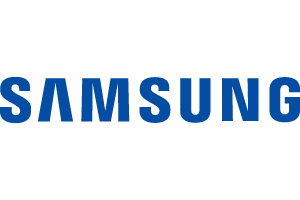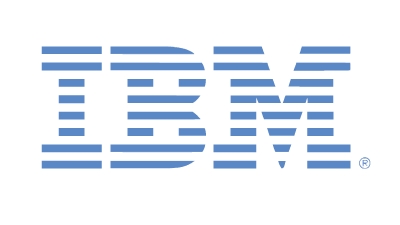How Do You Measure Wealth -- People Or Profit?
Submitted by Anonymous (not verified) on
How Do You Measure Wealth -- People Or Profit?
By Richard F. Libin, President, APB
How do you measure wealth -- people or profit? If you’re like most businesses, you answered profit. However, the fastest way to your profits is by increasing the people wealth of your business.
This essential distinction has a tremendous influence on the success and growth of companies. Owners can spend hundreds of thousands of dollars yearly to find prospects often without the properly trained salespeople or sales managers in place. In essence, these businesses are not money broke, they are “people broke,” and being “people broke” is a critical limiting factor for growth.
So, how do businesses increase the wealth of their people? The answer can be broken down into three simple steps:
Develop people from within
Offer a career path to every employee
Equip employees with the tools they need to succeed
Develop People From Within
When organizations look externally to fill Sales or Manager positions, they typically recruit from a pool of professionals employed at other companies. When hired, the new recruits bring their old methods and habits to their new position, even if they don’t align with the processes and culture of their new employer.
It’s a double-edged sword: the new Manager is hired to run the organization based on past successes and practices yet expected to adapt to an unfamiliar but established structure. In reality, the new Manager changes the structure to what they know. While this may result in a temporary increase in performance, the long-term impact is a drop in performance and an increase in turn-over, as the rest of the team is trying to navigate unfamiliar territory.
Conversely, when businesses hire – or promote – someone from within the process becomes much simpler with better results. For example, when someone is promoted from a Sales position into a Manager position, the individual already knows the structure; they know the way the company does business and the processes used; they know the values of the organization, what the business stands for and everything else about the way it does business. When promoted from within, the new Manager is ready to take the next step in established structure, using familiar processes, to continue to drive growth and performance.
Offer A Career Path To Every Employee
Delineating a career path is the first step in building longevity. A career path not only clearly demonstrates the opportunities they have with the organization, but also creates a team environment where everyone shares a common culture and goals. To complement a career path, companies must offer an attractive employment package – a longevity plan that serves as an incentive for employees to stay. This can include health insurance, life insurance, spousal benefits and the opportunity for substantial financial gain regardless of the position an employee holds.
For example, if a business sets aside a certain amount of money for every sale by each salesperson to be used as an end-of-the-year bonus or as a contribution to a 401K, it creates an enormous feeling of empowerment and motivates all the salespeople to perform at their peek levels.
Equip Employees With The Tools To Succeed
Having a career path is only part of the route to longevity and retention. It is essential that organizations help their people develop. To do so, business leaders must provide mandatory training in the skills needed for every job function for every employee. Training programs cannot be selective for several reasons:
Training builds an understanding that part of each person’s job is to nurture and develop people below them.
Training gives every employee the same opportunity to embrace new skills and apply them on an even playing field.
A star performer may emerge only after training and tools for success are provided.
A “superstar” in his/her current role may not have the mindset or ability to embrace the skills needed to advance, a fact that becomes clear through training.
Training programs don’t have to be complex, but they must be comprehensive and include motivational, organizational, managerial, sales, service, and leadership skills. A host of programs are readily available from auto manufacturers as well as specialized training organizations like Ken Blanchard or Franklin Covey.
The ROI of Being “People Rich”
Most businesses embrace what we call the Totem Pole perspective – owner or CEO at the top, managers in the middle, and salespeople at the bottom, especially in organizations where there is little training, no clear-cut path for advancement, and high turn-over. The Totem Pole philosophy adds up to an incredible expense: hiring a salesperson who leaves within the first 90 days can cost an average of $25,000 to $30,000 depending on the business; hiring a sales manager with the same result costs an average of $80,000 to $100,000, again, depending on the business. It’s no secret that retention is crucial.
Building longevity – not simply retaining employees – requires a different mindset beginning at the highest level, one we call the Funnel. In this model, salespeople are at the top – they are the ones who put everything into the funnel; managers are in the middle, controlling what passes through to the bottom, and CEOs or owners are at the bottom reaping the rewards of a well-structured environment that follows effective business processes. In this model, employees are viewed as an asset, not an expense. Training, career paths and longevity programs are seen as investments with the potential for high returns – profits and growth. Using this model, businesses can create an environment that makes them “people rich” and that leads to high financial returns.
Richard F. Libin is the author of the book, “Who Stopped the Sale?” (www.whostoppedthesale.com) and president of APB-Automotive Profit Builders, Inc., a firm with more than 48 years experience working with both sales and service on customer satisfaction and maximizing gross profits through personnel development and technology. He can be reached at rlibin@apb.cc or 508-626-9200 or www.apb.cc.






